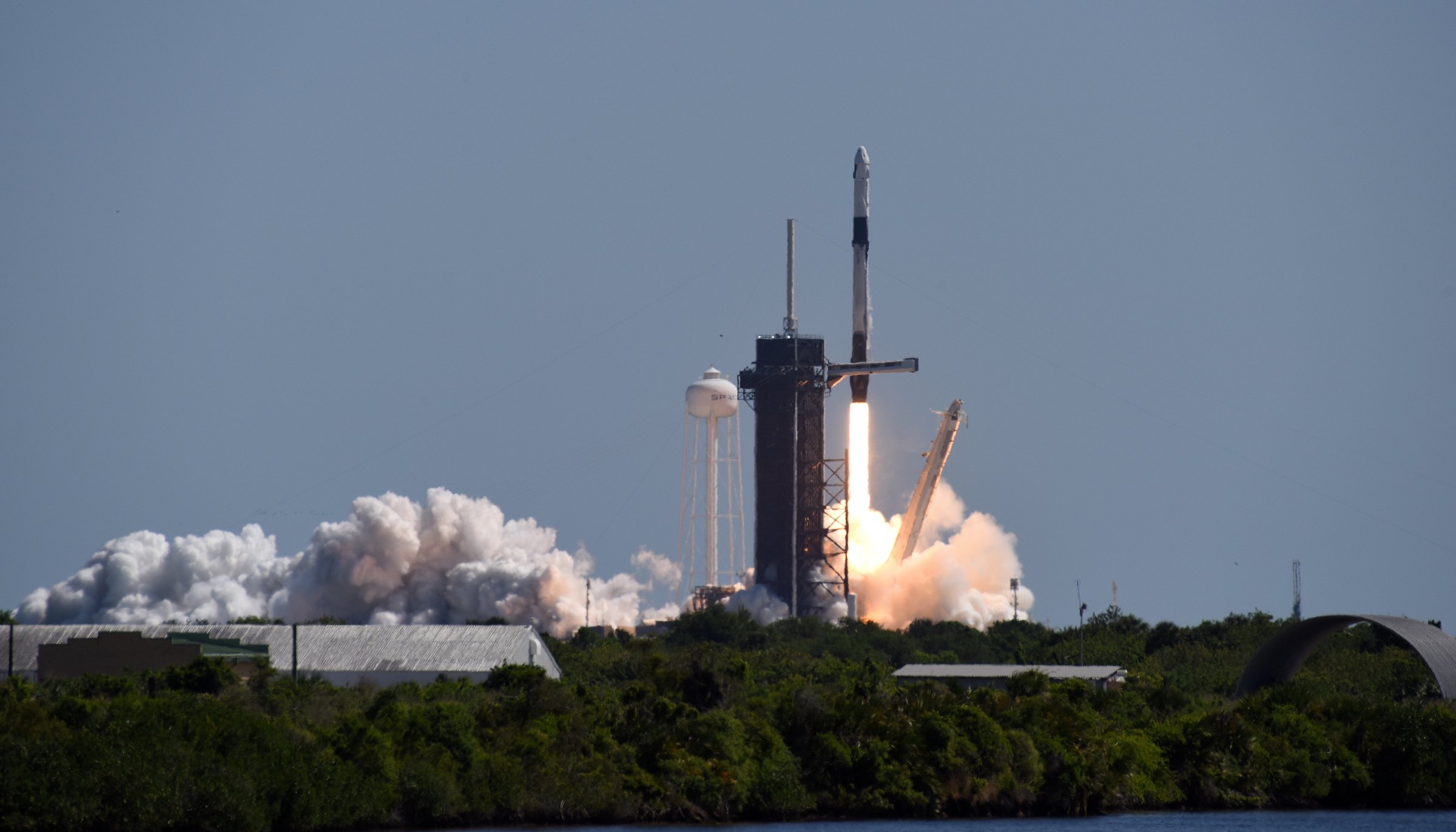
The dining will be fine aboard the International Space Station (ISS) throughout the next week. Flying 408 km (254 mi.) above the Earth and clipping along at a brisk 28,000 km/h (17,500 mph), the crew will be tucking into arroz Estelle Valencia, a Spanish rice dish; secreto de cerdo with pisto—Ibérico Pork with tomatoes, onions, eggplant, and peppers; and chicken and mushroom paella.
That, at least, is what four of the 11 crew members aboard the ISS will be eating—the four who will arrive at the station tomorrow morning, along with their full larder, after blasting off aboard a SpaceX Crew Dragon spacecraft this morning from Cape Canaveral’s Pad 39A, at 11:17 AM EDT, on the first fully private station mission. The flight, sponsored by the Houston-based company Axiom Space and known as Ax-1, is commanded by Axiom vice president and former astronaut Michael López-Alegría. Also on board are three entrepreneurs and philanthropists: American Larry Connor, Canadian Mark Pathy, and Israeli Eytan Stibbe—each of whom who paid an estimated $55 million per seat for their 20-hour journey to the station and the eight days they will spend aboard.
Space tourists have flown to the ISS before—eleven of them over the past two decades; but all of them were solo adventurers who paid to fly aboard publicly funded ships crewed by professional astronauts. AX-1 is the first fully private mission to the station—but not the last. Axiom has at least three more such missions planned in the coming years. What’s more, as I reported last week, Axiom plans to launch four separate modules to dock with the ISS—the first in 2024 and the others at nine-month intervals thereafter—which will separate and become their own private station before the ISS is decommissioned and de-orbited in 2030. Three other companies—Nanoracks, Blue Origin, and Northrop Grumman—are also planning to launch their own private space stations in this decade. (All of these launches, exciting as they may be for many, do come at an environmental cost. According to one calculation of fuel use and exhaust output conducted by the website Champion Traveler, one Falcon 9 launch produces the CO2 equivalent of 395 transatlantic passenger flights.)
But all of that is for later. Today the AX-1 crew is preparing for the mission ahead, and—never mind their $55 million first class seats and their gourmand menu—they will be be working hard. In a pre-launch press conference, Connor told reporters: “We’ve spent anywhere from 750 to over 1,000 hours training. Additionally, across all of the astronauts here, we’re going to do some 25 different experiments encompassing over 100 hours of research [while] we are on the ISS.” One such experiment will involve a brain headset that will conduct real-time electroencephalograms (EEGs) of the crew as they fly. The astronauts will also be conducting experiments on in vitro stem cells.
In addition to work, there will be time for a poignant remembrance. Stibbe, the second Israeli to fly in space, once piloted military jets under the command of Ilan Ramon, the first Israeli astronaut, who died in the 2003 disintegration of the space shuttle Columbia. Several pages from Ramon’s diary survived the crash and Stibbe will carry them aloft with him, along with a song written by Ramon’s son and a painting by his daughter of the diary pages falling from the sky.
Space is a hard business, a dangerous business, and an expensive business. But it’s also an emotional one. “[Ramon] was a good friend,” Stibbe told CBS News, and then added respectfully: “He was my commander.”
This story originally appeared in TIME Space, our weekly newsletter covering all things space. You can sign up here.
More Must-Reads From TIME
- The 100 Most Influential People of 2024
- Coco Gauff Is Playing for Herself Now
- Scenes From Pro-Palestinian Encampments Across U.S. Universities
- 6 Compliments That Land Every Time
- If You're Dating Right Now , You're Brave: Column
- The AI That Could Heal a Divided Internet
- Fallout Is a Brilliant Model for the Future of Video Game Adaptations
- Want Weekly Recs on What to Watch, Read, and More? Sign Up for Worth Your Time
Write to Jeffrey Kluger at jeffrey.kluger@time.com